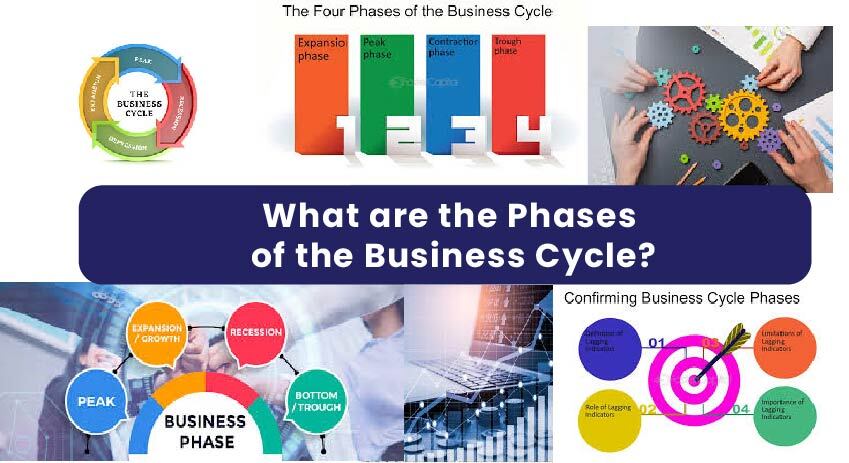The economy is dynamic and ever-changing, much like nature itself. It struggles sometimes and booms other times. The term “business cycle” refers to these economic swings.
Understanding the business cycle will help you understand how market movements and economic policy affect people’s lives whether they are investors, entrepreneurs, students, or casual observers. It could say in simpler terms:
What Is the Business Cycle?
The Business Cycle describes the natural rise and fall of economic growth over time. It describes the expansion and contraction of the level of economic activities in real GDP.
In short: it’s the heartbeat of an economy.
Economists generally divide the cycle into five major phases:
- Expansion
- Peak
- Contraction (or Recession)
- Trough
- Recovery (sometimes included as a separate or overlapping phase)
Let’s explore each one in detail.
Expansion Phase: The Growth Era
What Happens Here?
- GDP rises steadily
- Unemployment declines
- Consumer confidence improves
- Businesses invest more
- Interest rates are often moderate
Key Indicators:
- Rising industrial production
- Increasing retail sales
- Boom in real estate and stock markets
Example:
Think of the economic surge in India between 2004–2008. IT, manufacturing, and services were all booming—classic expansion.
Peak Phase: The Turning Point
What Happens Here?
The economy reaches its highest potential
Demand starts outpacing supply
Inflation might spike
Asset prices become overvalued
Key Indicators:
- GDP growth hits its highest point
- Inflationary pressure increases
- Central banks might hike interest rates
Think of it as:
A car going full speed uphill—it can’t go much faster or higher. Eventually, something’s got to give.
Contraction Phase: The Slowdown Begins
Also known as a Recession if it lasts for a significant period (typically two consecutive quarters of negative GDP).
What Happens Here?
- Economic activity declines
- Companies slow hiring or lay off workers
- Consumer spending drops
- Profits shrink
- Stock market may dip
Key Indicators:
- Falling GDP
- Increasing unemployment
- Reduced credit availability
Real-World Example:
The 2008 global financial crisis was a deep contraction that shook economies around the world.
Trough Phase: The Bottom Point
This is the lowest point of the business cycle—where the economy stagnates before starting to improve.
What Happens Here?
- GDP hits rock bottom
- Unemployment is at its highest
- Consumer and business confidence is low
- Governments may intervene with stimulus packages
Why It Matters:
This phase is critical because it signals a potential recovery and provides opportunities for investors and businesses to prepare for the next phase.
Recovery Phase: Bouncing Back
The phase between trough and expansion is often called the recovery.
What Happens Here?
- GDP starts rising again
- Employment begins to increase
- Consumer spending rebounds
- Investments flow in again
Key Indicators:
- Growth in industrial output
- Positive investor sentiment
- Return of consumer demand
Real-World Context:
Post-COVID-19 economic efforts in 2021—governments worldwide rolled out stimulus packages, and economies slowly picked up pace.
The business cycle is not always smooth or uniform. It can be short, long, shallow, or deep depending on internal and external economic factors like:
- Government policies
- Technological changes
- Global events (like pandemics or wars)
- Market speculation
Why Understanding the Business Cycle Matters
Understanding the business cycle helps:
Investors make smarter choices about when to buy or sell.
Policy-makers plan interest rates, inflation controls, and taxation.
Businesses decide on expansion, hiring, or cutting costs.
Individuals prepare for financial planning, job security, or savings.
Final Thoughts
The business cycle is a foundational concept in economics. Recognizing which phase we can give powerful insights into what’s coming next. While you can’t stop the cycle, you can ride it smartly.
Tip: Stay informed, watch economic indicators, and align your personal or business strategies accordingly.
